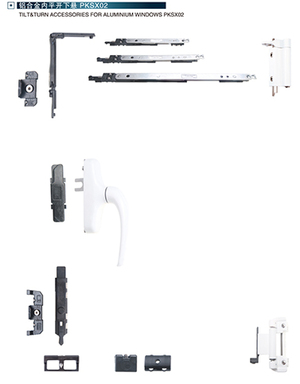Blog Information
- Posted By : OULAI TOM
- Posted On : Apr 30, 2021
- Views : 358
- Category : General
- Description : If you are struggling to open the door or your building hardware manufacturer is opening too fast or slow, then it may be time to adjust your door closer. As long as you have the right tool for your closer (screwdriver, hex key, or small wrench) and a little time to check your work as you go, these six steps can help you successfully adjust most door closers.
Overview
If you are struggling to open the door or your building hardware manufacturer is opening too fast or slow, then it may be time to adjust your door closer. As long as you have the right tool for your closer (screwdriver, hex key, or small wrench) and a little time to check your work as you go, these six steps can help you successfully adjust most door closers.
A door closer is a device attached to the top of the door to regulate and control the operation of the door, these can be mechanical (hydraulic), or electromagnetic.
On most standard closer, there are three adjustable hydraulic valves that all work together to help the door close smoothly:
- Backcheck: An optional feature in hydraulic door closers that prevents the door from opening too fast and slamming against the wall or other objects. The opening swing is slowed at a certain degree and controls the speed of the door during the balance of its opening cycle. This is usually the valve located by itself and facing away from the hinges.
- Sweep (Main Speed): The movement of the door from the open position to the point where it is a few inches away from hitting its latching point (12 degrees before latching). This is usually the valve located in the middle.
- Latching Speed: The closing speed of a door closer that kicks in within the last few inches before the door reaches its latching point. This is usually the valve closest to the hinge, located near the sweep.
If at any point you find oil in the cover or leaking from the closer body, it means the seals are broken and you need to replace the door closer.
Step 1: Remove the cover
If you can’t see the adjustment valves, then the closer has a cover that needs to be removed. If there are fasteners, loosen them and slide the cover off. If there are no fasteners, the cover is held on by tension and you can just pull it off. You should now be able to see the adjustment valves.
Step 2: Close all of the valves
Close the three hydraulic valves by turning them clockwise until they stop.
Step 3: Adjust the back check
Make 1.25-1.5 turns counterclockwise and open the door to make sure it comes to a steady, hard stop. At about 75 degrees, the door should start to slow down so that it does not slam into the surface behind or get caught by the wind. Turning the valve counterclockwise will make the door open wider.
Step 4: Adjust the sweep/main speed
Make 1.5-2 turns counterclockwise to adjust the closing speed of the door. Turning the valve clockwise will slow down the closing speed.
Step 5: Adjust the latching speed
Make 1.5-2 turns counterclockwise to achieve your desired latching speed. The correct latch speed depends on the situation. If it is an outside door, you may want to increase the latch speed (counterclockwise) so it snaps closed a little faster. If it is an office door, you may want to slow it down (clockwise) so it does not slam.
Step 6: Test the door
Open and close the door a few times to test the adjustments and modify as needed. Remember to make small adjustments at a time; even an eighth of a turn can make a big difference! Rotate the valves clockwise to decrease the speed of the closer and counterclockwise to increase the speed. To see this process in action, check out the video below.
In addition, there are important ADA, fire door, and life safety requirements that you need to consider with your door closers, such as force and closing speed. We are here to help! Our team of experts can answer your questions to help meet these requirements.
As a professional window hinge manufacturer,we accept all kinds of window hardware orders, welcome to consult.
